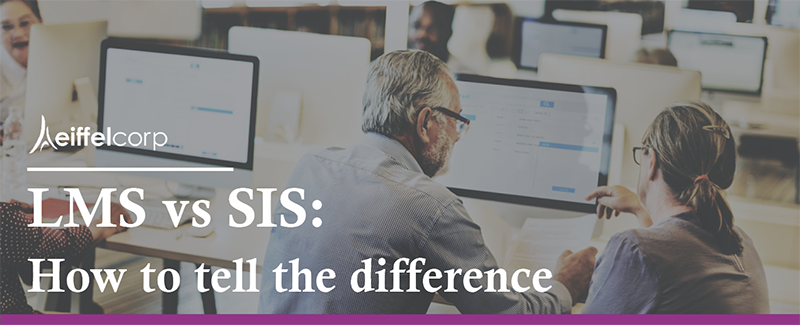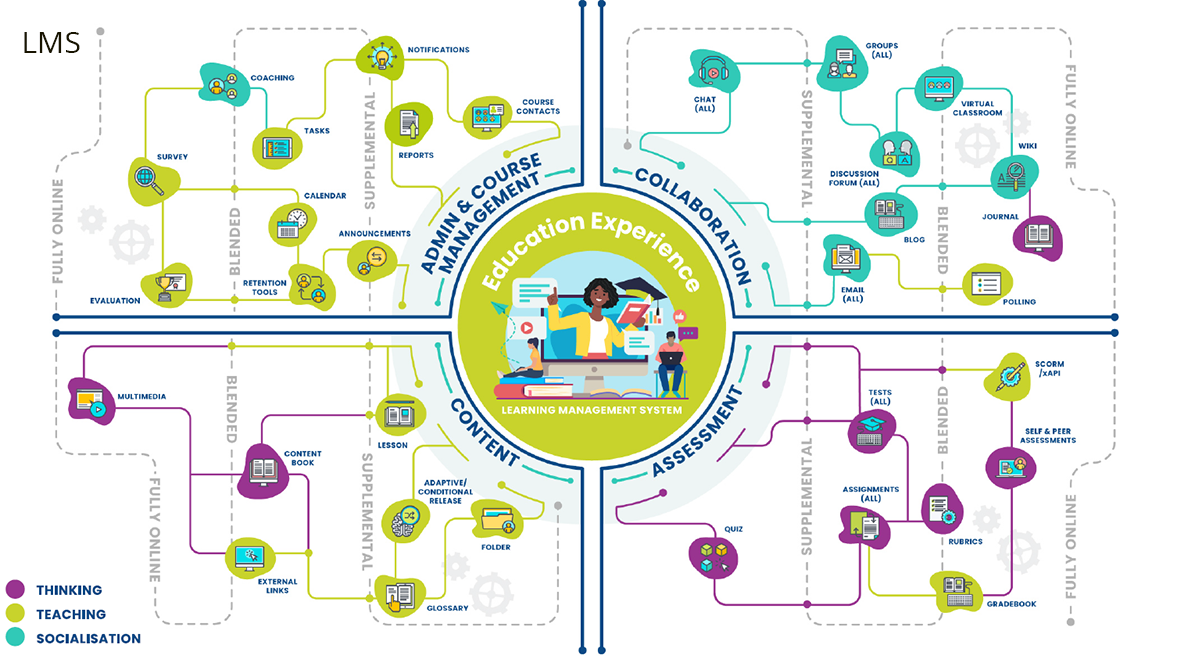
A Learning Management System and Student Information System are critical systems for both the education and business sectors of today. Both systems have very distinct purposes, with some features in common. With similar functionalities and capabilities, the two systems are often confused as being one and the same thing – and therefore the distinct purpose seems blurry or confusing.
To understand the purpose of each of these systems within educational institutions, it is of great importance to unpack the specific roles fulfilled by each of these systems and highlight their differences. To achieve this, it would make sense to start with the definition of each system.
Defining the LMS
The LMS (Learning Management System) or VLE (Virtual Learning Environment) is a software application that is responsible for the administration of courses, documentation (like progress tracking and grading of students), reporting and delivery of learning material to students. It can also include attendance records and a student’s curriculum information. An LMS creates a virtual space where learners can connect with instructors (and vice-versa) in a controlled environment that encourages knowledge development.

Find out more about our Digikamva LMS services and solutions here.
Defining an SIS
A student information system allows educational institutions to manage student data and courses. This system’s functionalities typically include the admission, enrolment, registration of students, fees management, attendance record management, test and exam management, certificate and document management and management of programmes and courses.

The Difference?
While both the LMS and SIS have administrative functionalities, the SIS does not replace the need for systems that manage the instruction side of things. In fact, the two systems should support each other. What is the difference between these systems then?
Institution-to-student relationship: An SIS enables a university, college or school to manage its administrative relationship with its students. It literally stores and manages student information and automates the management thereof.
Instructor-to-student relationship: On the other hand, the LMS enables the lecturer or faculty to manage their instructional relationship with their students. In other words, it is used for the management of course resources – whether it is within or outside of the physical classroom.
Integration
When integrated with each other, the SIS and LMS create a relationship with students that is not only functional but improves their student experience at an institution. When choosing an SIS and LMS, it is therefore important to take note of the capabilities of each, and assign specific tasks to each system, with the integration of some, where possible and/or relevant. Integration avoids duplicate data entry, faster data management and ultimately less manual work for all, with more accurate data management.
We have LMS and SIS services and solutions that suit your unique needs. Please get in touch for an obligation-free consultation to see how we can help you.
*This article also appears on digikamva.education



